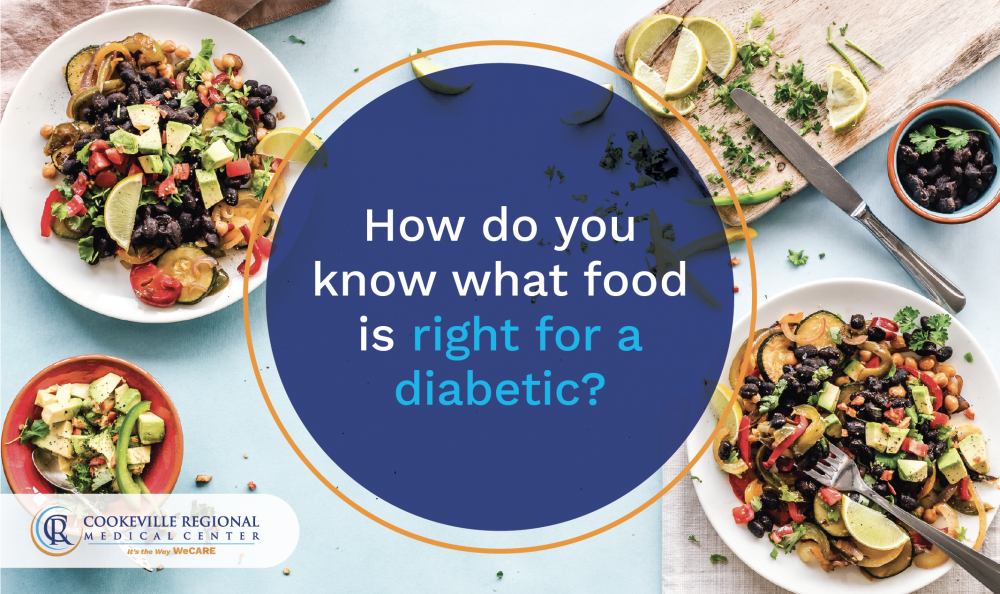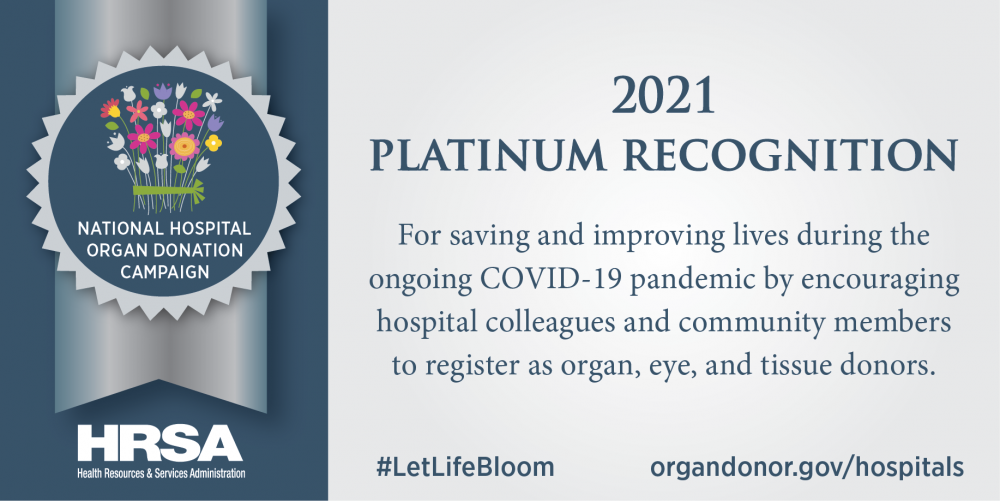Lifestyle
Eating healthy with diabetes

Having diabetes can be a challenge when it comes to eating healthy. But with the right education, it can be done.
Kim Mayberry, RN, director of the Diabetes Center at Cookeville Regional Medical Center, has some tips.
“The best piece of advice is using the plate method for healthy eating which means filling half the plate with non-starchy vegetables, quarter of the plate with lean proteins and quarter of the plate with 30-60g carbohydrates,” she said. “Diabetes foodhub.org is an excellent resource.”
Non-starchy vegetables are lower in carbohydrates, so they do not raise blood sugar very much. They are also high in vitamins, minerals and fiber, making them an important part of a healthy diet. Filling half your plate with non-starchy vegetables means you will get plenty of servings of these superfoods.
Examples of non-starchy vegetables are:
- Asparagus
- Broccoli or Cauliflower
- Brussels Sprouts
- Cabbage (green, red, napa, bok choy, chinese)
- Carrots
- Celery
- Cucumber
- Eggplant
- Leafy greens such as kale, collards, mustard greens, or Swiss Chard
- Mushrooms
- Okra
- Grean beans, pea pods, snow peas, and sugar snap peas
- Peppers such as bell peppers and hot peppers
- Salad greens such as lettuce, spinach, arugula, endive, and other salad mixes
- Squash such as zucchini, yellow squash, chayote, spaghetti squash
- Tomatoes
Foods high in protein such as fish, chicken, lean beef, soy products, and cheese are all considered “protein foods.”
Proteins foods (especially those from animal sources) usually contain saturated fat, which may increase your risk of heart disease. Lean proteins are lower in fat and saturated fat, making them a healthier choice.
Keep in mind that some plant-based protein foods (like beans and legumes) are also high in carbohydrates.
Examples of lean protein foods include:
- Chicken, turkey, and eggs
- Fish like salmon, cod, tuna, tilapia, or swordfish
- Shellfish like shrimp, scallops, clams, mussels, or lobster
- Lean beef cuts such as chuck, round, sirloin, flank, or tenderloin
- Lean pork cuts such as center loin chop or tenderloin
- Lean deli meats
- Cheese and cottage cheese
Plant-based sources of protein:
- Beans, lentils, hummus, and falafel
- Nuts and nut butters
- Edamame
- Tofu and tempeh
- Plant-based meat substitutes
Foods that are higher in carbohydrate include grains, starchy vegetables, beans and legumes, fruit, yogurt, and milk. These foods have the greatest effect on blood sugar.
Limiting your portion of carbohydrate foods to one quarter of your plate can help keep blood sugars from rising too high after meals.
Examples of carbohydrate foods:
- Whole grains such as brown rice, bulgur, oats/oatmeal, polenta, popcorn, quinoa, and whole grain products (bread, pasta, tortillas)
- Starchy vegetables such as acorn squash, butternut squash, green peas, parsnips, plantain, potato, pumpkin, and sweet potato/yam
- Beans and legumes such as black, kidney, pinto, and garbanzo beans
- Fruits and dried fruit
- Dairy products like milk, yogurt, and milk substitutes (i.e. soy milk)
Water is the best choice because it contains no calories or carbohydrates and has no effect on blood sugar. Other zero- or low-calorie drink options include:
- Unsweetened tea (hot or iced)
- Unsweetened coffee (hot or iced)
- Sparkling water/club soda
- Flavored water or sparkling water without added sugar
- Diet soda or other diet drinks
Our meals don’t always fit neatly into the sections of the plate. Many dishes combine the different food types together, like soups, casseroles, sandwiches, pizza, pasta, etc.
You can still use the plate method when preparing and portioning combination foods. Just identify the different foods in the dish and think about where they would fit in the plate.
For example, in a slice of pizza, the crust would be the carbohydrate food, the cheese and any meats on top would be the protein foods, and the tomato sauce and any vegetables on top would be the non-starchy vegetables.


